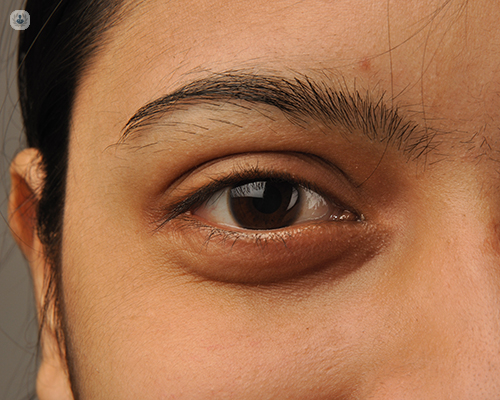How is dry eye diagnosed and treated?
Escrito por:Dry eye is a prevalent condition that occurs when the eyes do not produce enough tears or when the tears evaporate too quickly, leading to discomfort, blurred vision, and potential damage to the ocular surface. The condition can arise from various factors, including ageing, hormonal changes, environmental conditions, and prolonged screen use.

Diagnosis
Diagnosing and treating dry eye effectively is crucial to alleviate symptoms and prevent complications. The diagnostic process begins with a detailed eye examination and a discussion of the patient’s symptoms, such as dryness, redness, irritation, or a gritty sensation in the eyes. Some patients may paradoxically experience excessive tearing, a reflex reaction to dryness.
Ophthalmologists may use tests like the Tear Break-Up Time (TBUT) to measure tear evaporation or the Schirmer test to assess tear production. Other methods, such as fluorescein staining, can highlight damage to the corneal surface, while osmolarity tests determine tear stability by analysing salt concentrations. For more complex cases, imaging techniques like meibography assess the function and health of the meibomian glands, which are essential for maintaining a stable tear film.
Treatment
Treatment options for dry eye are tailored to its severity and underlying cause. For mild cases, artificial tears provide lubrication and relief. Prescription medications, including anti-inflammatory eye drops like cyclosporine or lifitegrast, address chronic inflammation and help restore tear production.
In more severe cases, punctal plugs can be inserted into tear ducts to retain natural tears on the eye’s surface. For patients with meibomian gland dysfunction, warm compresses, gland expression, or advanced treatments like LipiFlow can reduce tear evaporation.
Lifestyle modifications, such as limiting screen time, using a humidifier, and wearing protective eyewear, also play a vital role in managing symptoms. Emerging therapies are revolutionising dry eye treatment, including biologic eye drops derived from a patient’s plasma and light-based therapies to restore gland function.
Early diagnosis and a customized treatment plan can significantly improve a patient’s quality of life, alleviating symptoms and preserving eye health for the long term. Regular follow-ups with an eye care specialist ensure optimal management and adjustment of treatments as needed.


